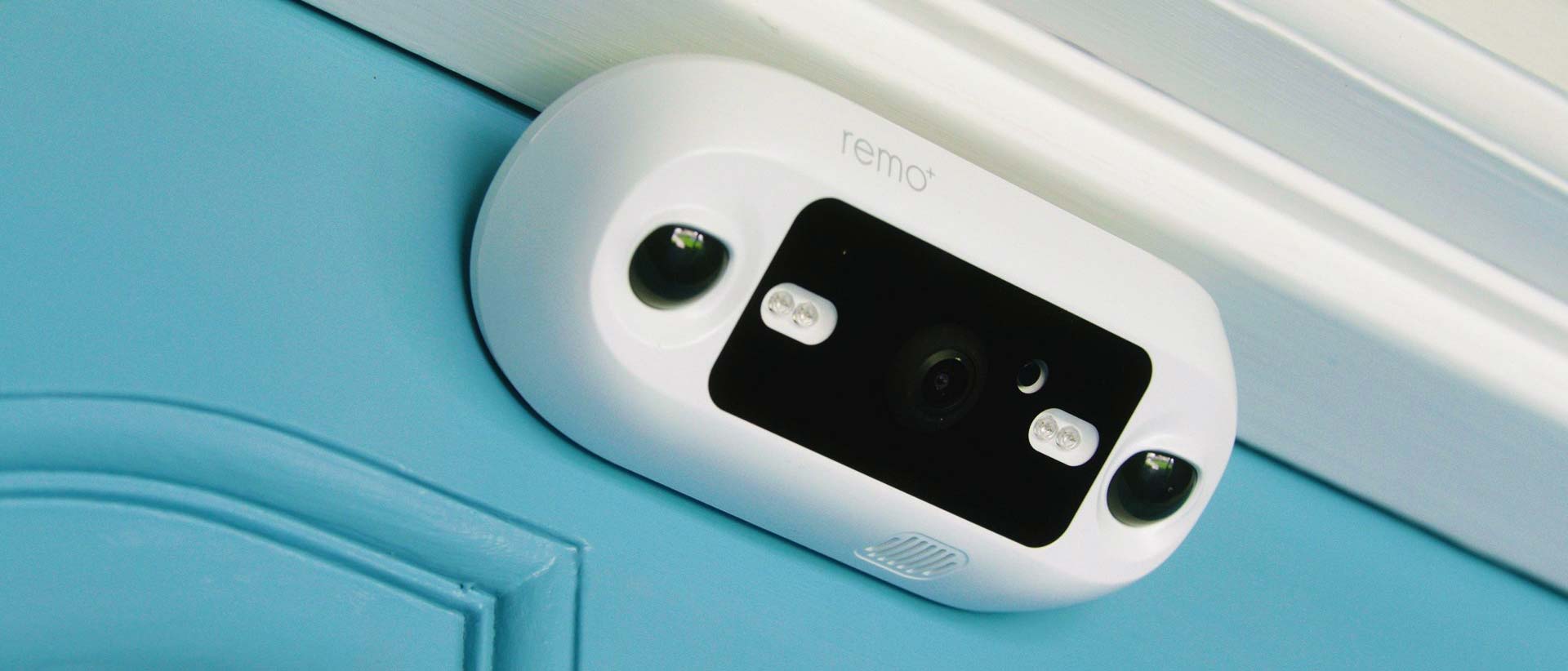Tom's Guide Verdict
Skip the Remo DoorCam 2: It lacks two-factor authentication and its functionality is limited.
Pros
- +
Lets you see the base of your door
- +
Good video quality
- +
Don't have to install anything permanently
Cons
- -
No two-factor authentication
- -
No customizable motion zones if running on battery power
- -
Feature-poor app
Why you can trust Tom's Guide
Home security cameras are some of the most popular smart home devices, and for good reason. They let you keep an eye on your house from wherever you are.
However, if you want a good outdoor camera, you'll have to mount it securely to your house or some other structure, which often means drilling holes. The Remo DoorCam 2 gets around this potential pain point by fitting over the top of your door—no screws required.
Unfortunately, this convenience of installation is outweighed by a number of other factors, including a lack of features and proper security. And, from a practical standpoint, I feel that the Remo DoorCam 2 just doesn't make sense.
Remo DoorCam 2: Price and availability
The Remo DoorCam 2 costs $199 and has been available since September 2020.
Remo DoorCam 2 review: Design
Made to fit over the top of your door, the DoorCam 2 is comprised of two halves connected by a thin metal strip. The exterior section of the DoorCam 2 is roughly wedge-shaped, with a camera in the middle flanked by LEDs and motion sensors. The inside section is larger, as it holds three D-cell batteries as well as an antenna to connect to your Wi-Fi network.
The metal strip holding the two halves together can be adjusted so that the camera can lie snug against your door. Also included are some small screws that you can use to securely fasten the DoorCam 2 to your door.

The DoorCam 2's camera section is a sizable 6.4 × 2.6 × 2.5 inches, and although it sits at the top of your door, it's hard to miss. While its body is white, the center section housing the camera is all black, as are the two motion sensors at either end. Looking up at it, I felt like C-3PO talking to the sentry at Jabba's palace.
The interior section, which houses the batteries, is a bit larger, but because it's on the inside of your door, you're unlikely to really notice it. Remo says the batteries will last up to four months. The DoorCam2 can run off DC power (adapter not included), but that's assuming you have a power outlet near your front door.
Remo DoorCam 2 review: Setup
When you set up the DoorCam 2, it creates a Wi-Fi signal. In the Remo app, you're asked to scan the DoorCam 2's barcode, which will then let you connect your phone to the DoorCam. You then connect the DoorCam 2 to your home Wi-Fi network.
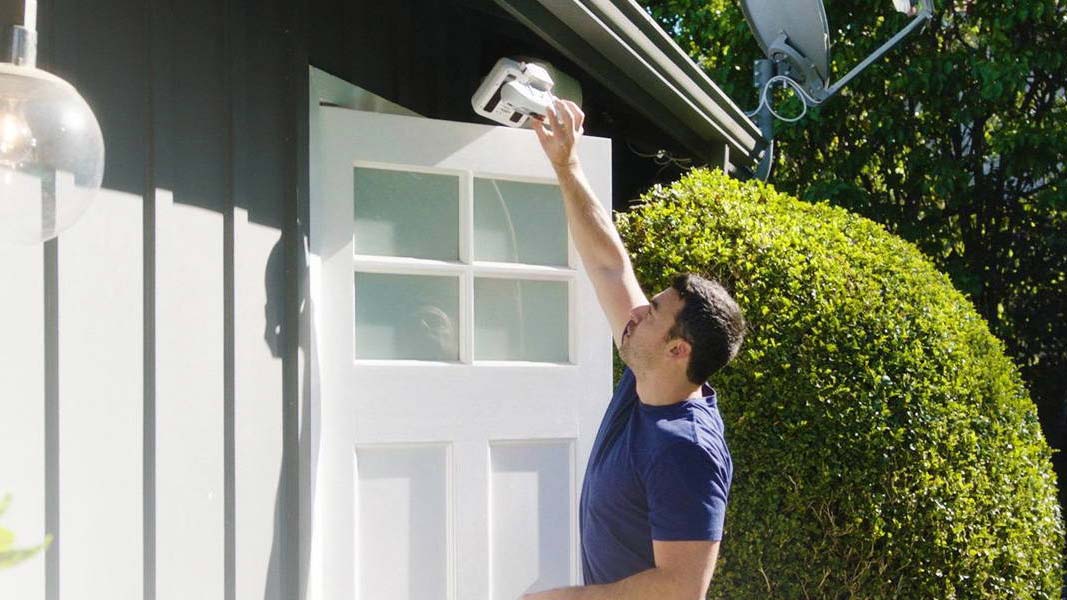
In all, it's pretty quick and painless, but Remo's app has very lax security. For starters, when you sign up for an account, there's no verification email or text sent to you, nor is there two-factor authentication for the account in general. A company representative said there are no plans to add this useful security feature.
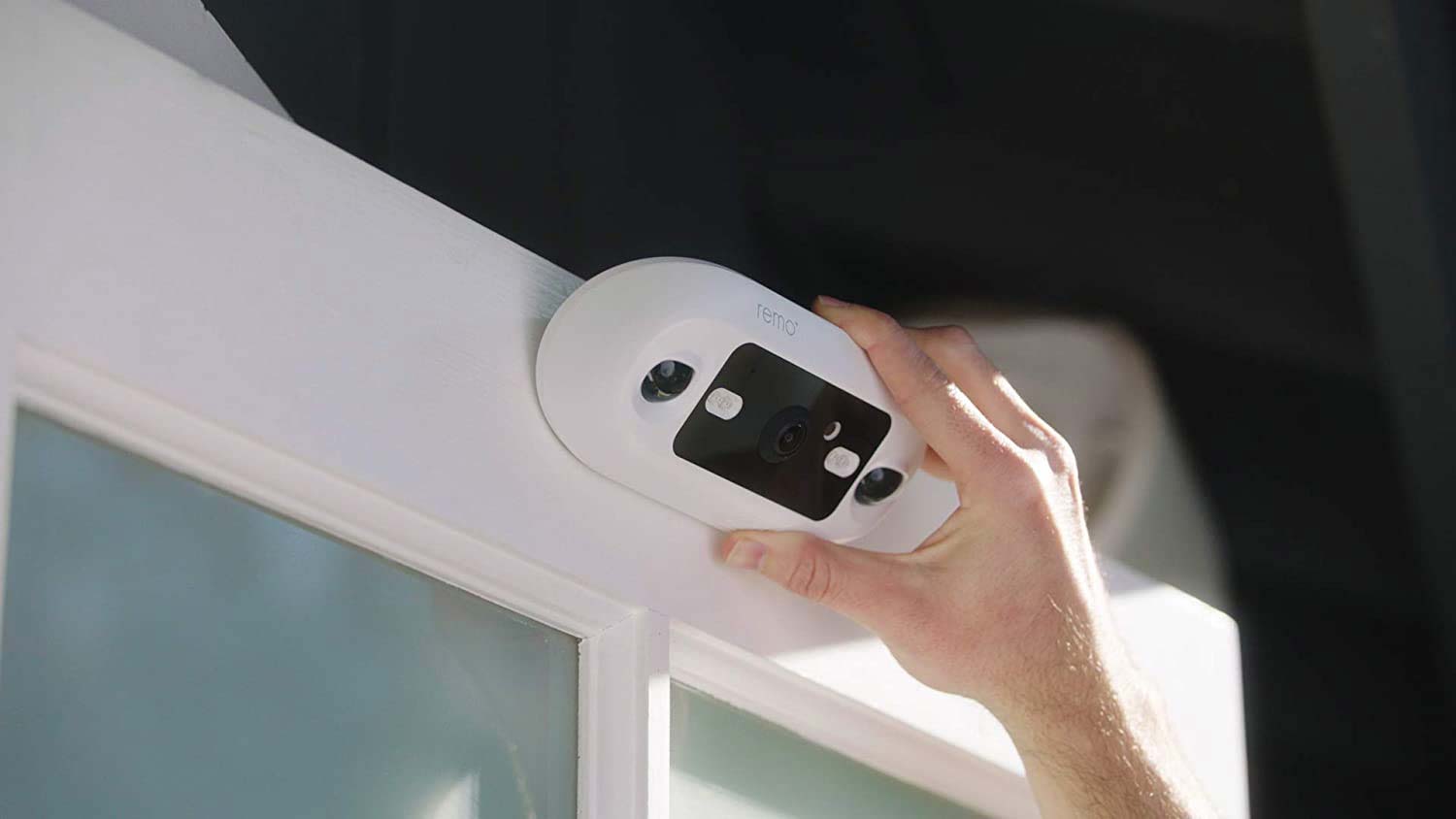
And when you're typing your Wi-Fi password into the smartphone app, the app displays the entire password and doesn't give you an option to hide it. These two things alone would give me pause.
Remo DoorCam 2 review: Video and audio quality
Because of where it's mounted, the DoorCam 2 offers a different perspective on the front of your door than any other video doorbell. One thing I liked is that it showed the very front of my front door, where packages are most likely to be dropped. Most other video doorbells can't show the first couple of feet in front of my door.
Daytime video from the DoorCam 2's 1080p camera was sharp and colorful, capturing the deep greens of my shrubs as well as the bright blue wrapping for the New York Times.
Because of the camera's placement, your perspective of visitors is a bit odd, as you're looking down at them. But you can still see their faces clearly.
Remo DoorCam 2 review: App and motion settings
Remo's app is pretty basic compared to those of the best security cameras. The DoorCam 2 has two motion sensors; Remo recommends using Sensor 1 for when using the camera on a porch, and Sensor 2 when using the camera in a hallway or apartment buildings.

Each camera's sensitivity can be set to low, medium, or high. You can also adjust the video quality (low, average, high), speaker volume, night mode and motion push notifications,
While Remo's app has a setting for motion zones, it's available only for devices that are plugged into a power source. This is perplexing considering that many other video doorbells and security cameras that run solely on battery power have this feature.
There are also no filters for person, package or animal detection, nor ability to adjust the length of recordings or scheduling features. And when reviewing footage, you have to scroll through a single long list; there's no way to search by day.
If you connect your Remo account to Alexa or Google Assistant, you can view a feed from the DoorCam 2 on Alexa- or Google Assistant-capable smart displays.
Remo DoorCam 2 review: Cloud storage
The DoorCam 2 comes with a free 30-day trial of the company's cloud-storage plan, after which it's $3/month or $30/year for 30 days of rolling cloud storage per device. If you plan on getting only one Remo device, this isn't a bad deal.
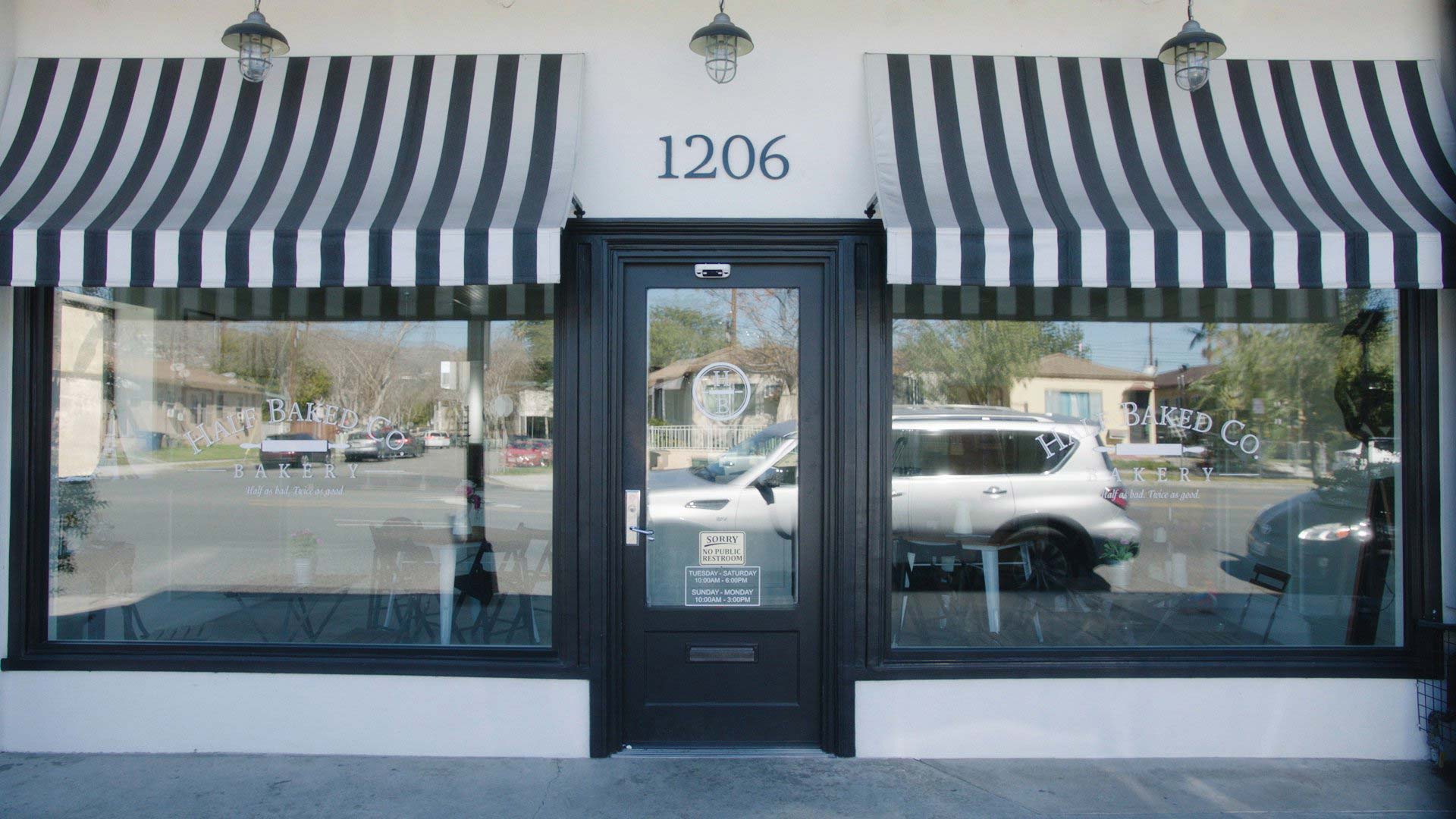
However, if you want to outfit your home with additional cameras, Remo's subscription plans aren't as good as those offered by Ring or Nest, which, for $10 and $6 per month, respectively, offer cloud storage for an unlimited number of devices. Then again, Remo offers only the DoorCam 2 and a video doorbell, so you're somewhat limited in what you can actually do.
If you choose not to subscribe to the DoorCam 2, you'll still get 3 days of rolling cloud storage for free.
Remo DoorCam 2 review: Verdict
I can see people thinking that the Remo DoorCam 2 is a good device for those who want a way to see who's at their front door, but who can't — or don't want to — mar their entryway with something permanent.
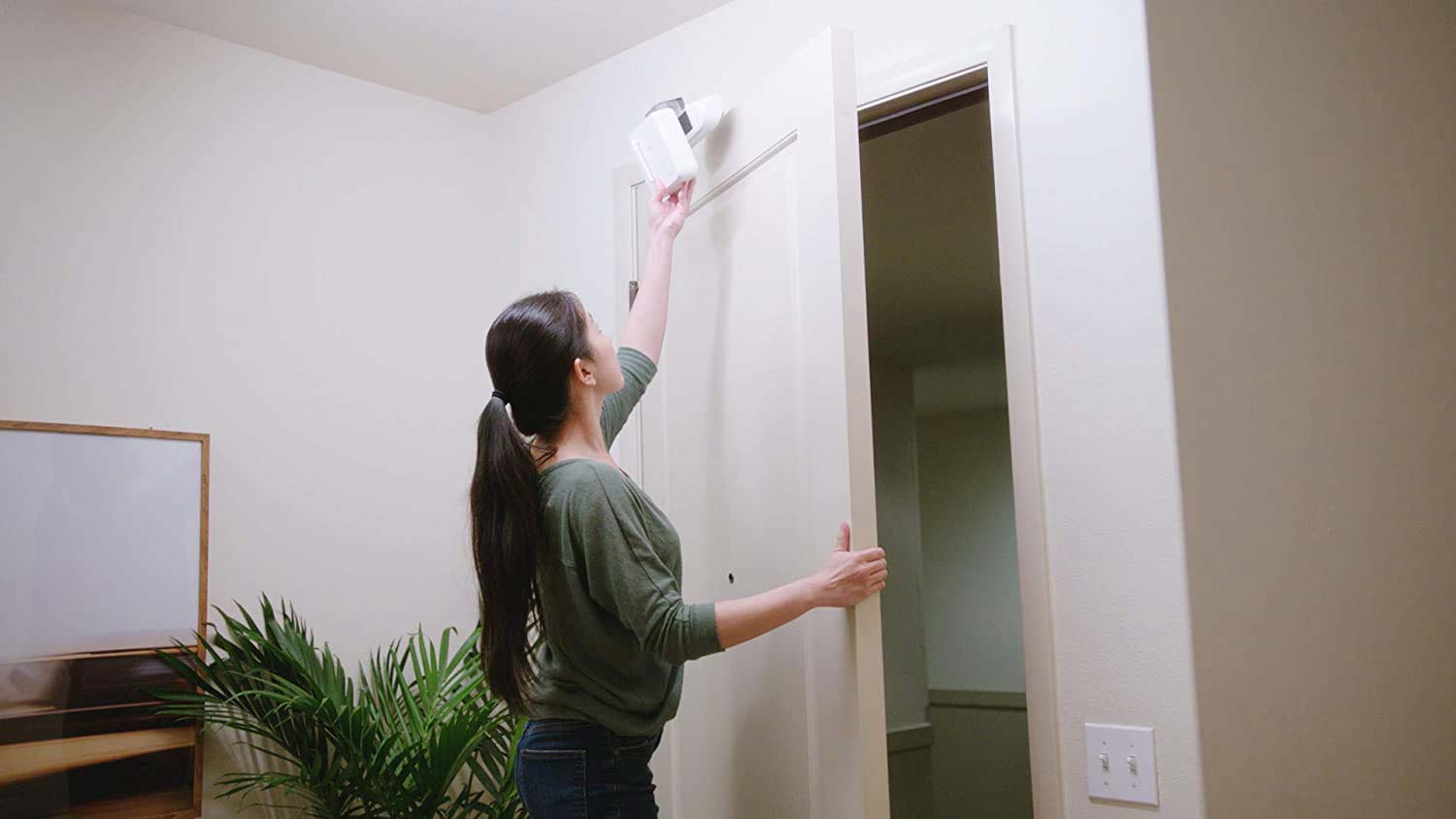
But despite the DoorCam2's good-quality video, there are too many things that it lacks. For starters, there's no sort of security for your password or the camera. We consider two-factor authentication the bare minimum, and it's something Remo's app doesn't have. Then there are the other features, such as scheduling, motion zones and person detection, which you can find on most other video doorbells and security cameras.
The other issue I have is with the concept. Any time something triggered the DoorCam 2, I would get a notification that it detected motion. However, there's no way to tell if the motion detector was tripped by a visitor, someone delivering a package, or a cat running across the threshold.
So, unlike a video doorbell — with which a visitor has to press a button, sending you a specific alert — I have to open the Remo app to see if I need to get up and answer the door.
For $80 less, you can get the Ring Video Doorbell and an indoor chime, which is more useful and secure. You'll have to stick it to your door frame, but you'll find it's far more practical than the Remo DoorCam 2.

Michael A. Prospero is the U.S. Editor-in-Chief for Tom’s Guide. He oversees all evergreen content and oversees the Homes, Smart Home, and Fitness/Wearables categories for the site. In his spare time, he also tests out the latest drones, electric scooters, and smart home gadgets, such as video doorbells. Before his tenure at Tom's Guide, he was the Reviews Editor for Laptop Magazine, a reporter at Fast Company, the Times of Trenton, and, many eons back, an intern at George magazine. He received his undergraduate degree from Boston College, where he worked on the campus newspaper The Heights, and then attended the Columbia University school of Journalism. When he’s not testing out the latest running watch, electric scooter, or skiing or training for a marathon, he’s probably using the latest sous vide machine, smoker, or pizza oven, to the delight — or chagrin — of his family.
